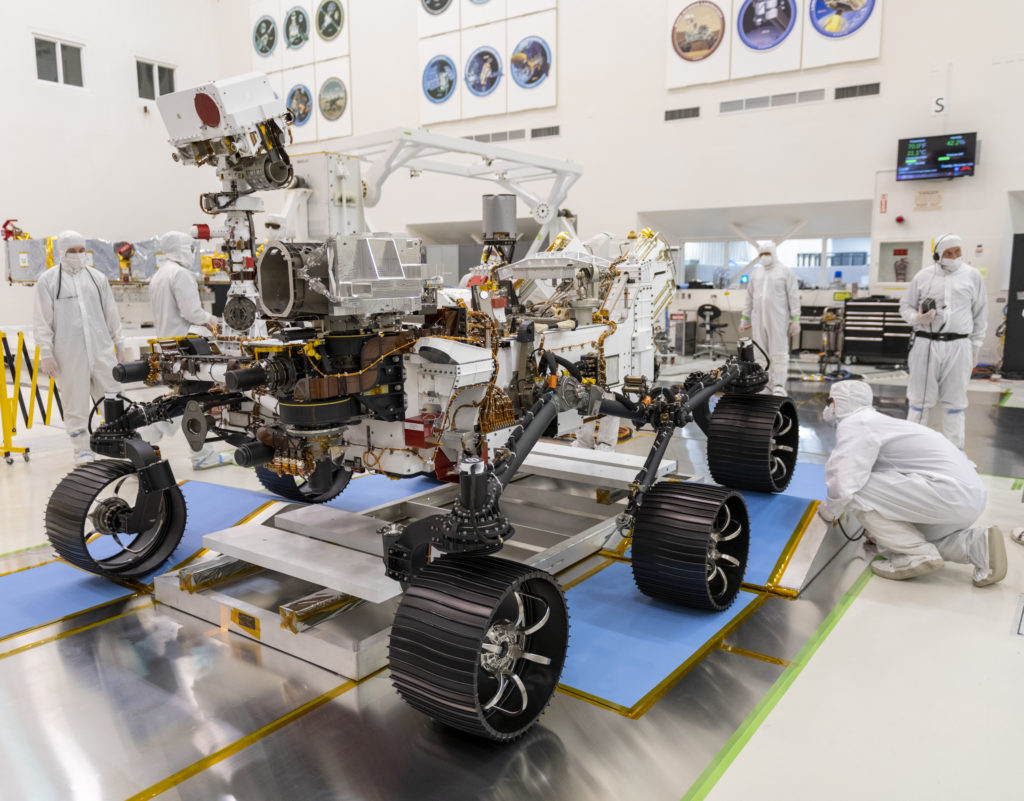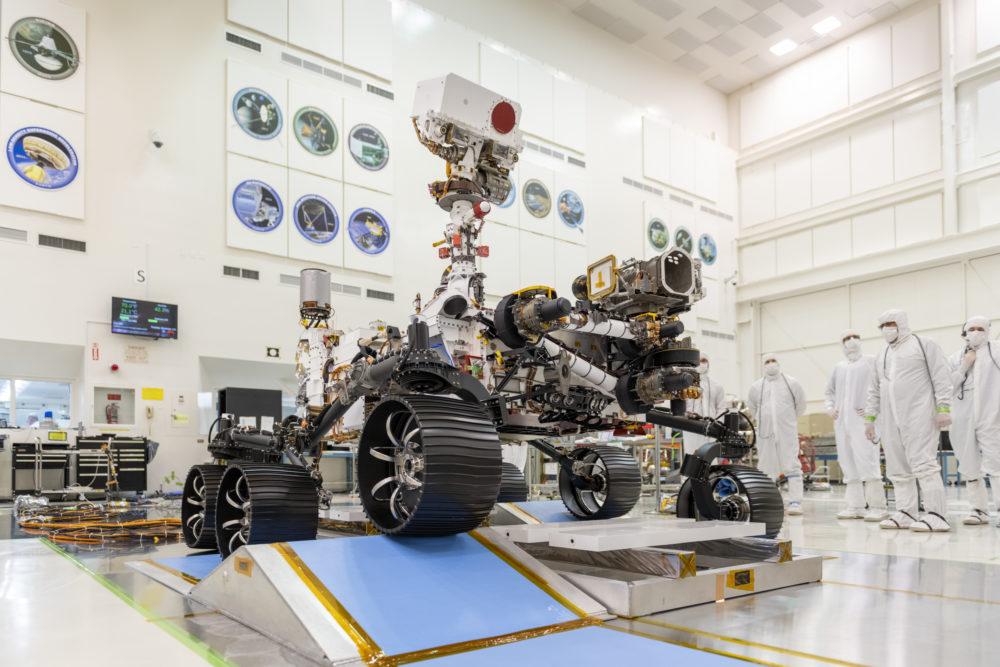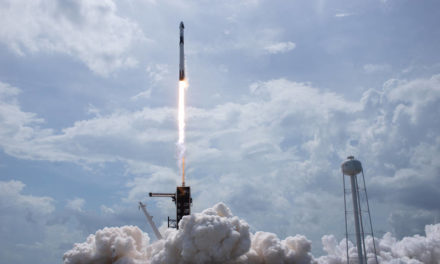Perseverance is the newest Mars rover which it will be used in NASA’s Mars 2020 mission.
1. The Perseverance concept relies on the successful design of the Mars Science Laboratory’s rover, Curiosity.
2. At 2,260 pounds (1,025 kilograms), Perseverance is heavier than its predecessor, Curiosity, but its weight is less than a compact car, even if the sizes are similar to it: length10 feet(3 meters), width 9 feet(2.7 meters), height7 feet tall (2.2 meters).
3. Perseverance’s wheels are robust, narrower than Curiosity’s, bigger in diameter(52.5 centimeters) and made of aluminum, with cleats for traction and curved titanium spokes for springy support.
4. The rover has a top speed on the flat, hard ground of 4.2 centimeters per second, or 152 meters per hour.
5. The Perseverance rover requires electrical power to operate and it carries a radioisotope power system that produces a dependable flow of electricity using the heat of plutonium’s radioactive decay as its “fuel.”
6. Perseverance has a total of 23 cameras ( 9 engineering cameras, 7 science cameras and 7 entry, descent and landing cameras), three antennas that serve as both its “voice” and its “ears” for communication and two microphones to record the landing and also the sounds of Mars.
7. Perseverance will have a better memory than the previous rovers: 2 gigabytes of flash memory, 256 megabytes of dynamic random access memory and 256 kilobytes of electrically erasable programmable read-only memory.
8. The Perseverance has attached to its belly, a helicopter which must test the first powered flight on Mars.
9. For the first time, Perseverance rover carries a drill that can collect core samples of the most promising rocks and soils and set them aside in a “cache” on the surface of Mars for the future expeditions to gather and bring them to Earth.

10. Some of the goals for the Perseverance mission are to test a method for producing oxygen from the Martian atmosphere, to identify other resources such as subsurface water and to provide valuable information that could affect future astronauts living and working on Mars.




